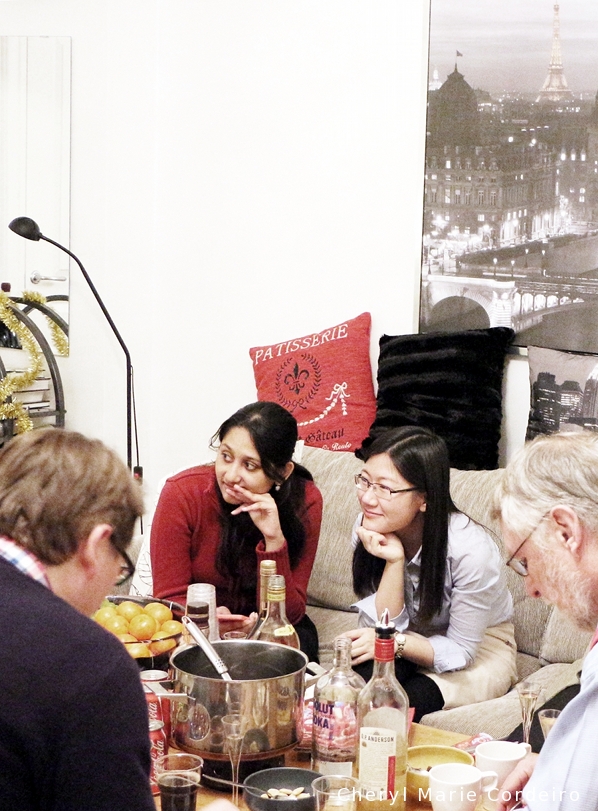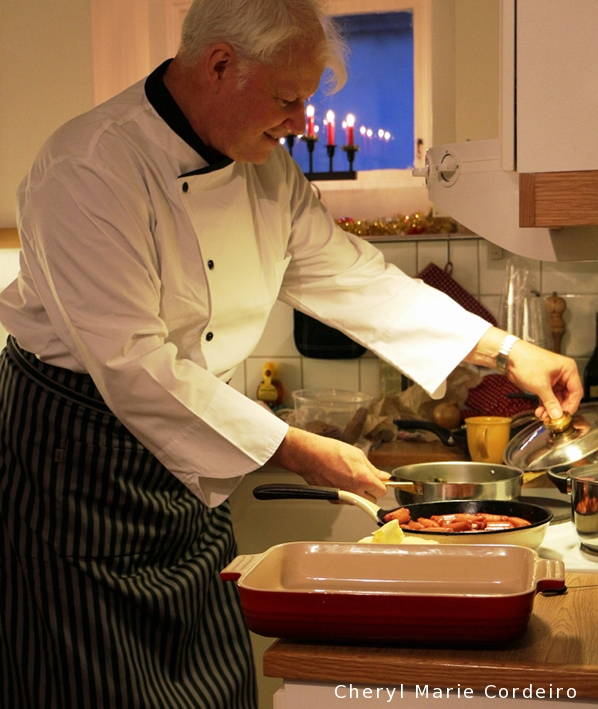JE Nilsson, who has researched and written about 1700s Swedish food,
was happy to play Santa ‘Chef de Cuisine’.
Text & Photo © JE Nilsson, CM Cordeiro 2013

Selecting first class produce is the key to all good cooking.
Here, we were planning a new orange and honey glazed spare ribs dish,
looking at blood oranges flown in from Italy.
By December every year as the days grow shorter and shorter, it is fun to spend time in the kitchen, planning and cooking Scandinavian classics, trying to recreate inherited recipes from days long gone past. The old fashioned dishes and the manners in which they are prepared, usually involve a lot of time consuming manual work, but nonetheless worth the effort in terms of rediscovering what has been and making it current again.
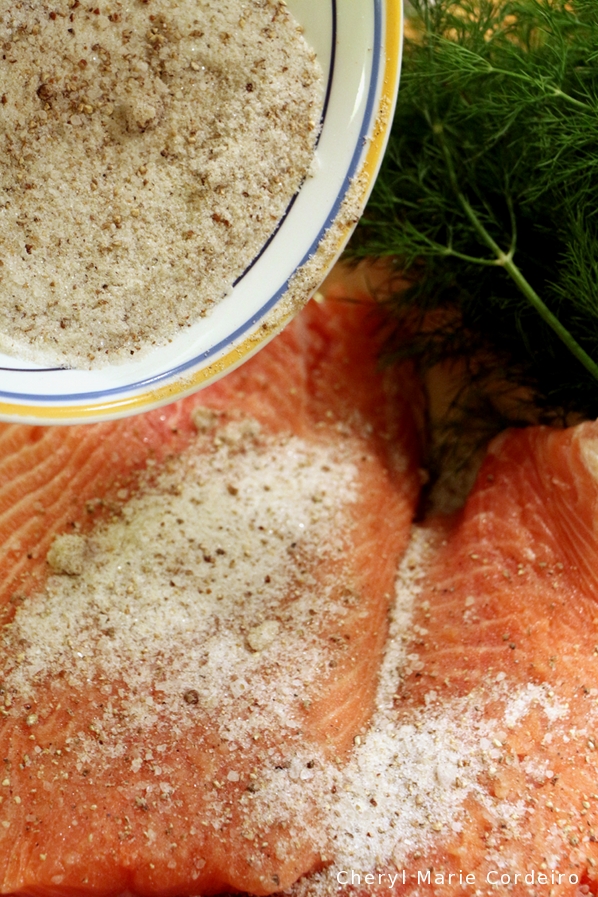
Gravad lax is maybe one of the oldest dishes on the traditional Swedish Christmas table.
Today it is pickled with a mixture of salt, sugar, pepper and a generous helping of freshly cut dill.
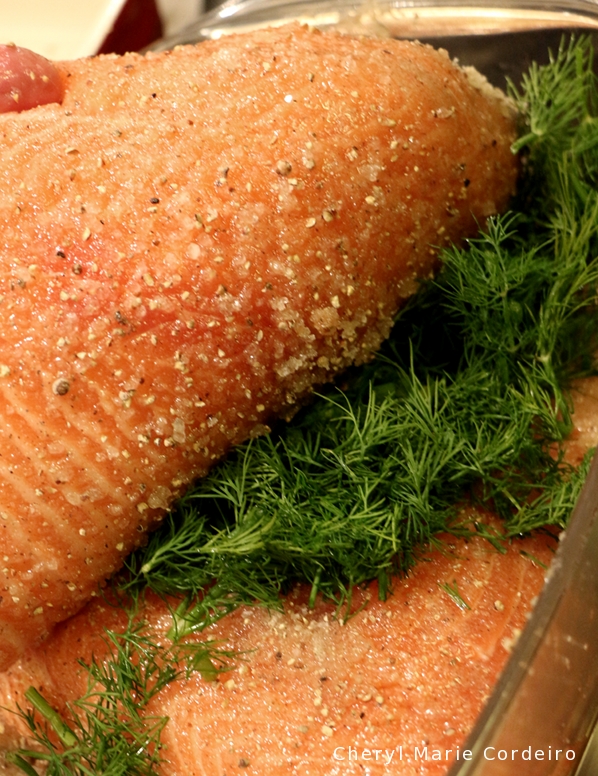
Once done, it is ideally eaten with a honey mustard sauce.
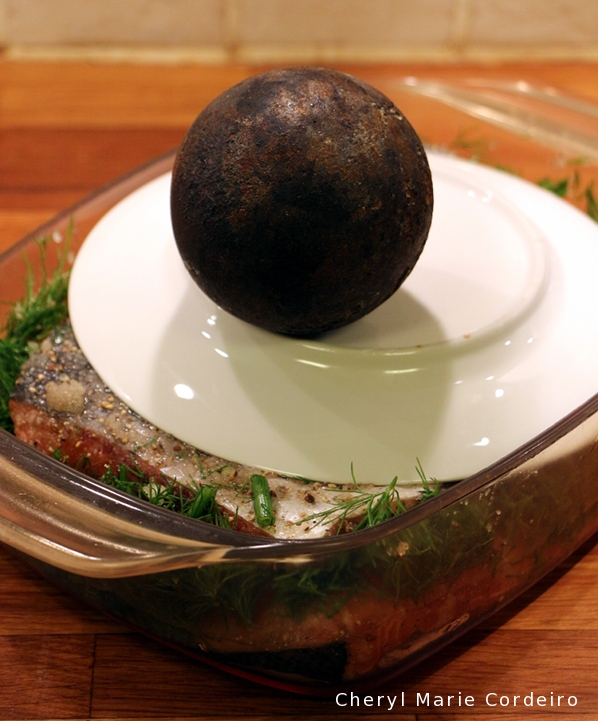
The (modern) use of an 18th century cast iron canon ball.
Originally the fish was as far as I understand buried in the ground since the word ‘gravad’ might well come from gräva, meaning ‘dig’ or ‘dug’. Today, the weight of the soil can (almost) be replicated by the use of an 18th century cast iron canon ball.
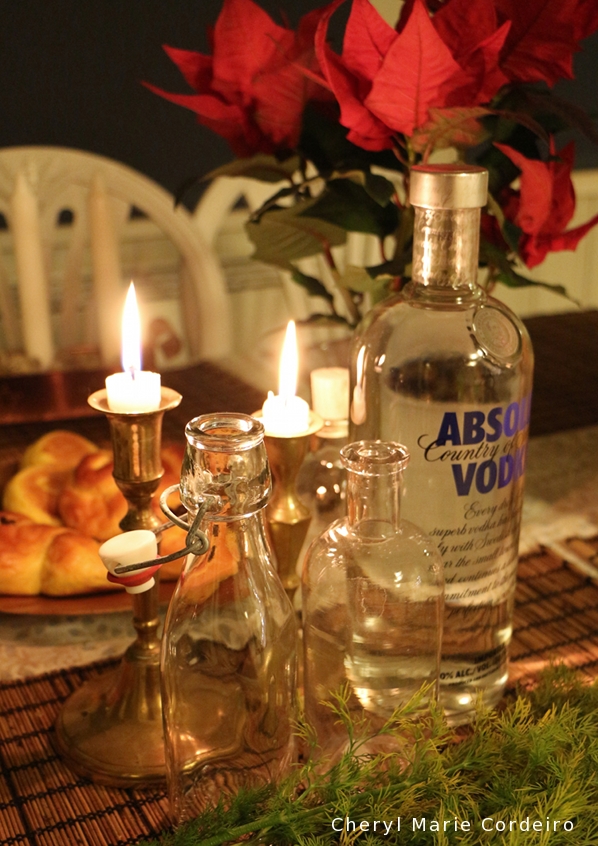
Home flavoring of vodka, a tradition with a long history.
In olden days, the liqueur that was to be served along with the food, especially the salty herrings, was also “home cooked”. To hide the awful smell from the backyard stills, the alcohol was flavored with a variety of spices. Some of these drinks were believed to have medicinal properties, so even monks in their monasteries were involved in extracting exotic oils from their garden grown herbs, for medical purposes, or so they say.
Today it is considered alright to buy ready made vodka for your flavouring experiments… probably more convenient as well…
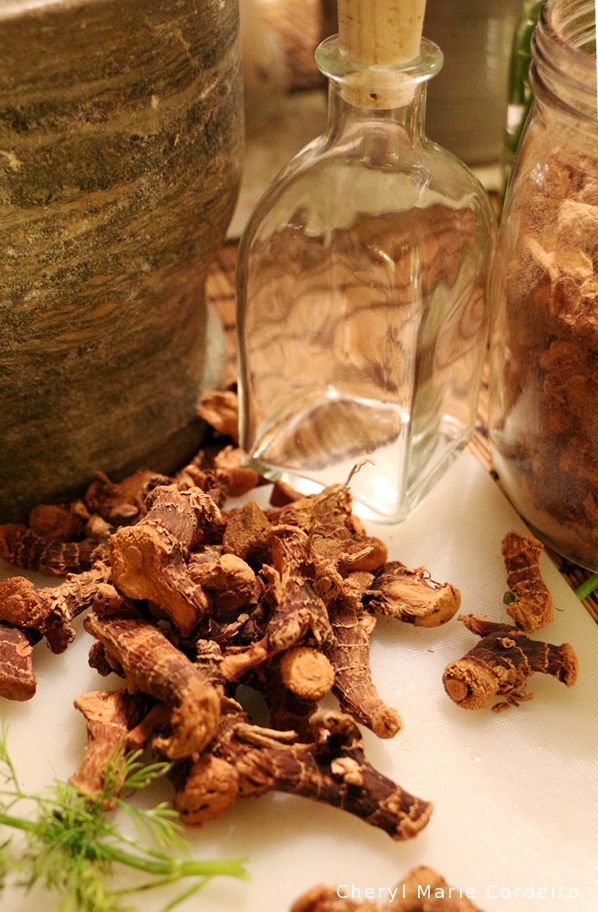
Galangal
One of these exotic spices that was imported to Sweden in the early 18th century was Galangal, a cheap version of Ginger. It was brought home by the Swedish East India Company as a combination of a trade good and filler between the valuable cargo of tea usually transported in chests. What these things might have tasted after having been shipped in the bottom part of the hull for the best part of a year is not possible to even guess, but this year we decided to give it a try by making out own schnapps spiced up with the same type of Galangal as the one found at the excavation of the East Indiaman Gotheborg (1745).
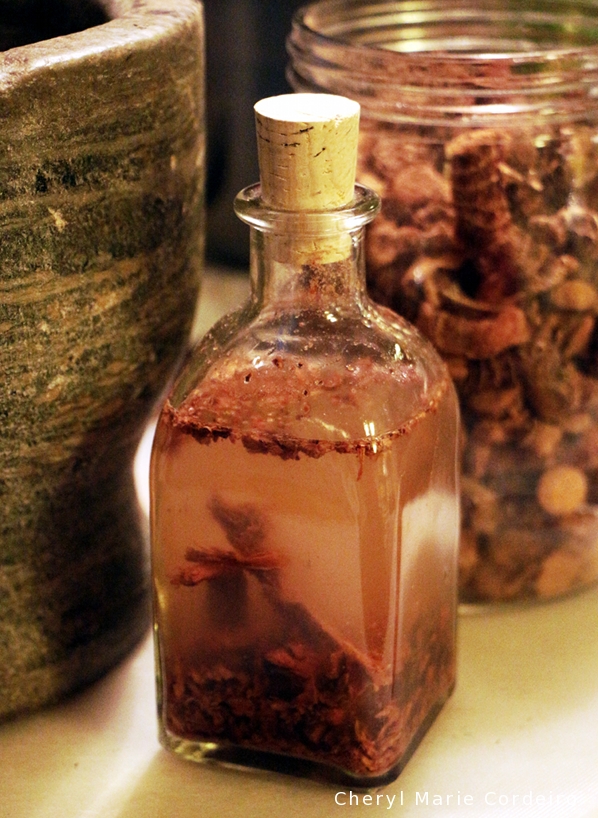
Absolut Galangal, freshly made. After a couple of weeks this will take on a mahogany red colour.
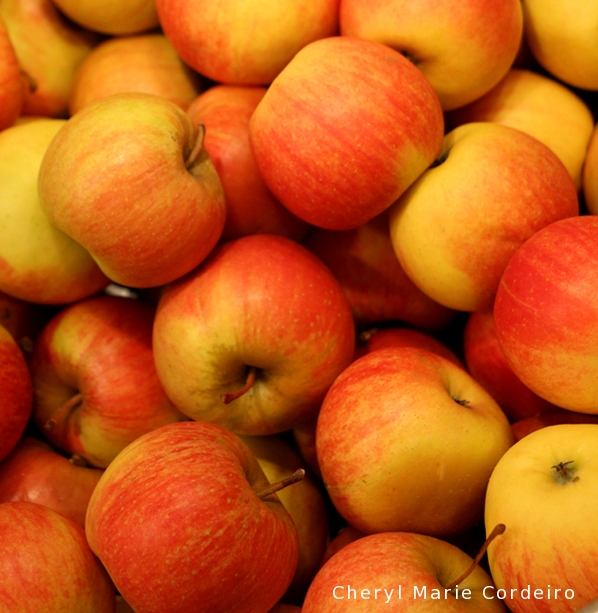
Apple sauce flavoured with cinnamon is a must with the Christmas food.
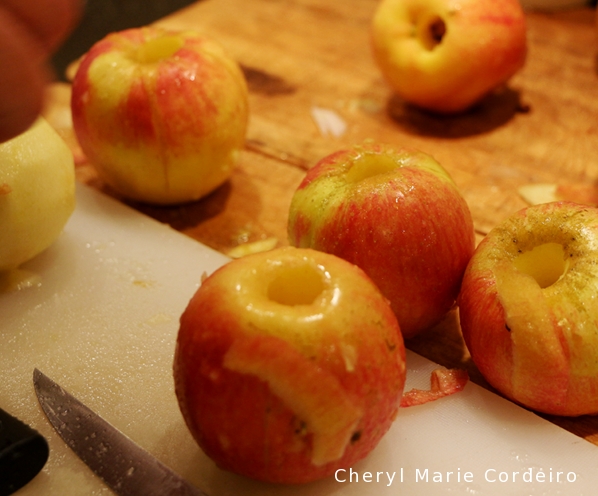
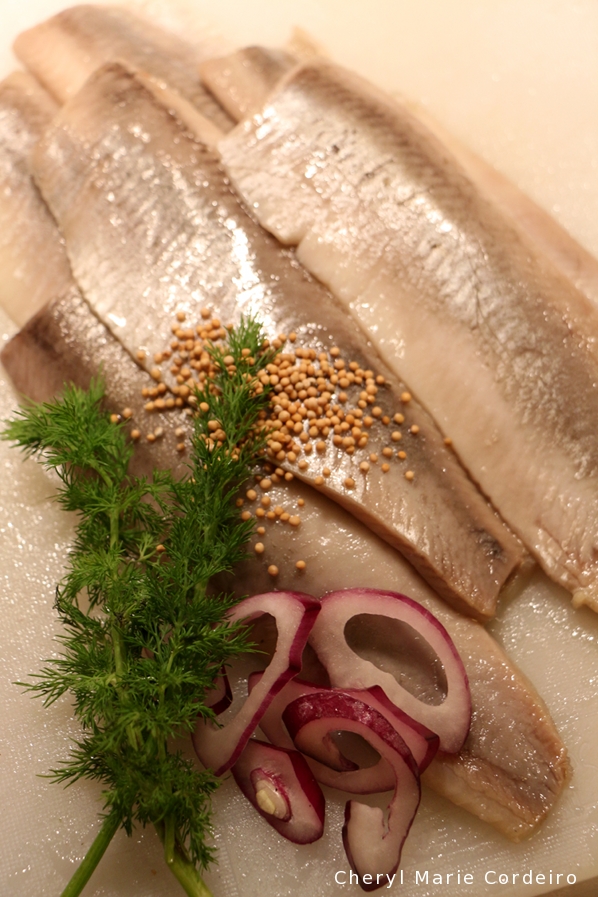
Pickled – raw – herring. This one to be flavoured with Sherry or Sack.
Sherry also became popular in Sweden by the East India trade with China, since all ships that made pit stops in Cadiz (Spain) for food and silver, also took the opportunity to stock up on this fortified wine that aged extremely well in the barrels they were stored in on board the ships.
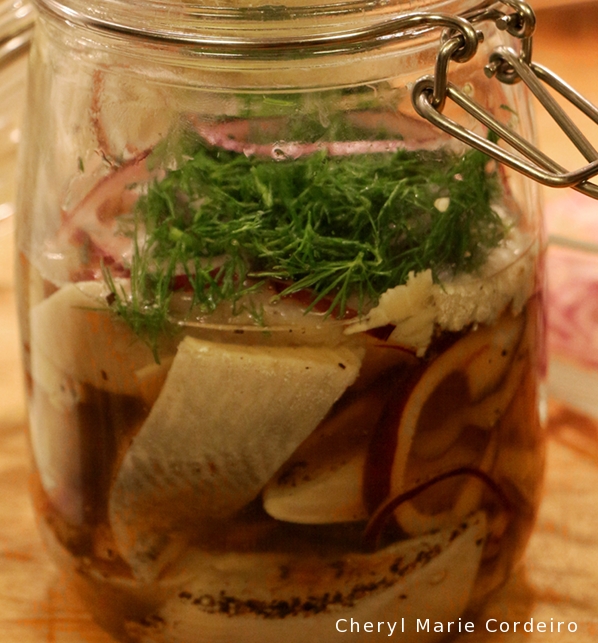
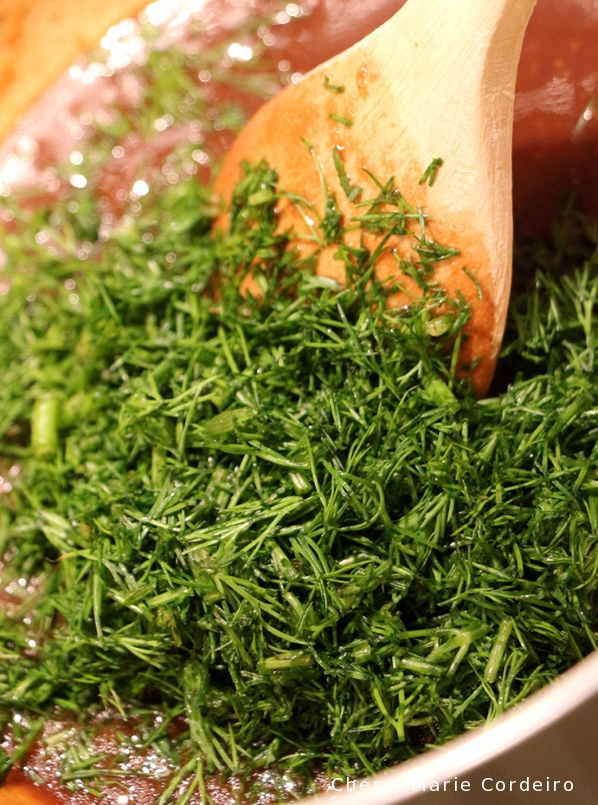
Mustard herring sauce for the ‘gravlax’ takes large amounts of finely chopped dill.
This sauce also makes a good base for mustard pickled herring. Actually, you can pickle herring in almost anything, as long as it is served with schnapps.
In age old tradition, to reduce excessive use of alcohol with the food, some rules were introduced to when and where such drinks could be used. One of these drinking rules say that schnapps can only be served when you are having herring. Addendum A, says – if you however are out of herring, anything will go as herring, except soup. Addendum B, says – If however it turns out that you only have soup, soup will also go as herring.
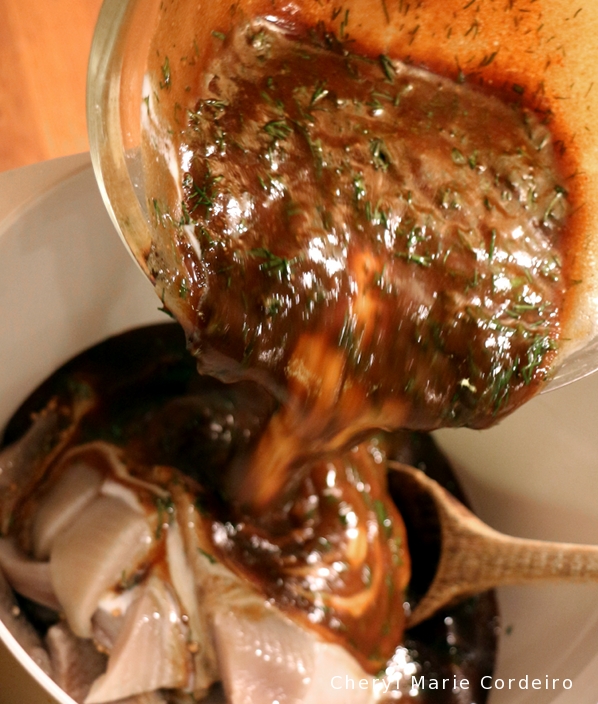
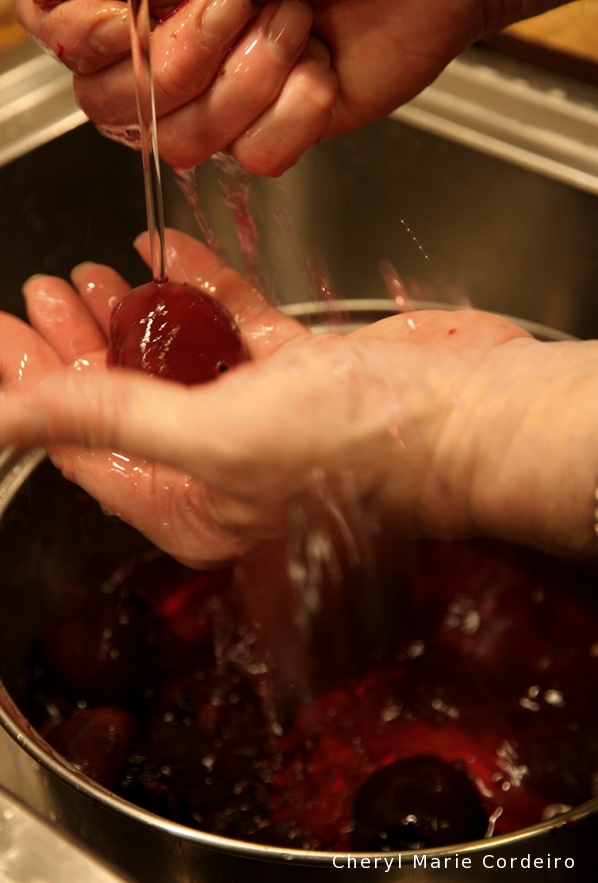
One of the nicest things to make for the Christmas meal is pickled rootbeets. These roots are so friendly it appears as if they really like to be cooked and pickled. Even the colour of the cooking water is magnificent.
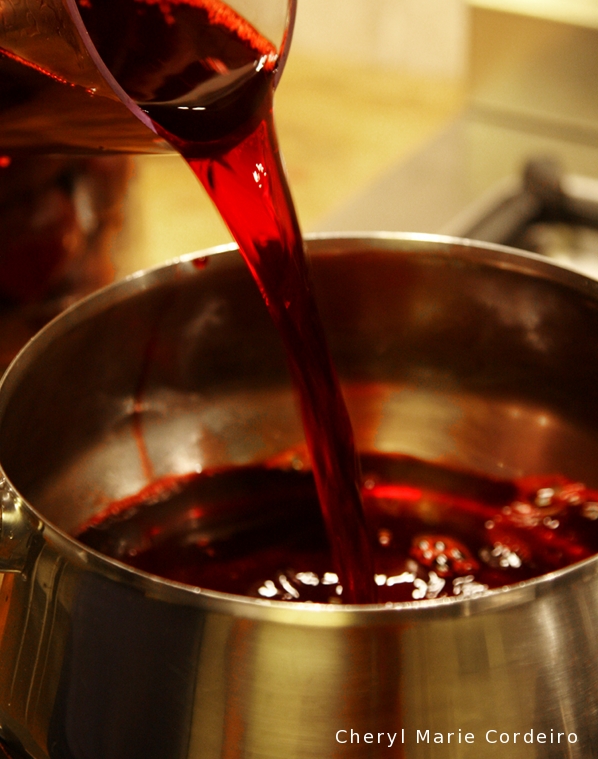
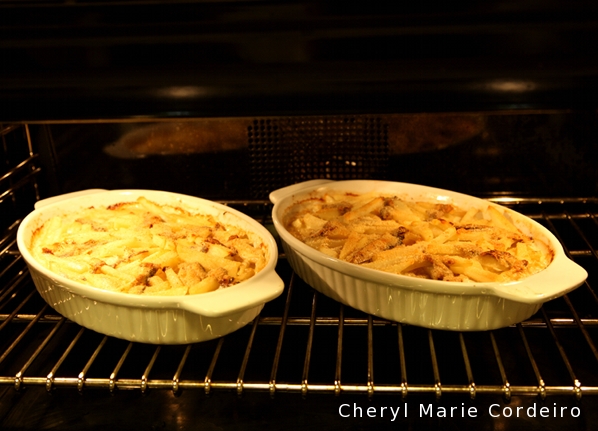
Janssons Frestelse, a traditional dish that is among the more recent additions to the Christmas yuletide dinners.
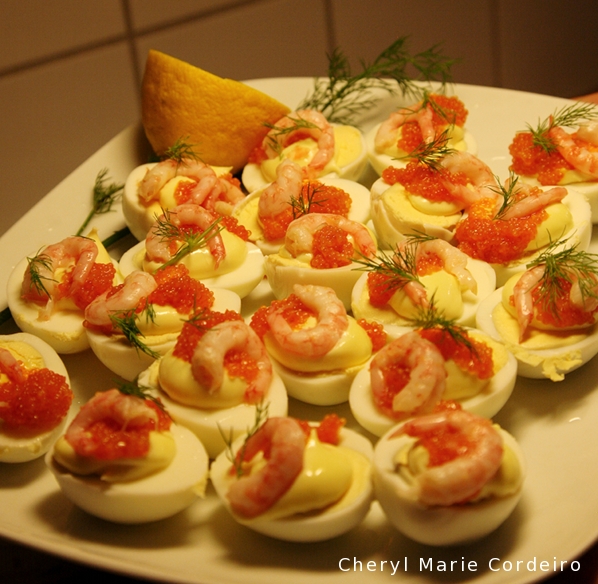
Egg halves with bleak roe and dill, with lightly salted shrimps.
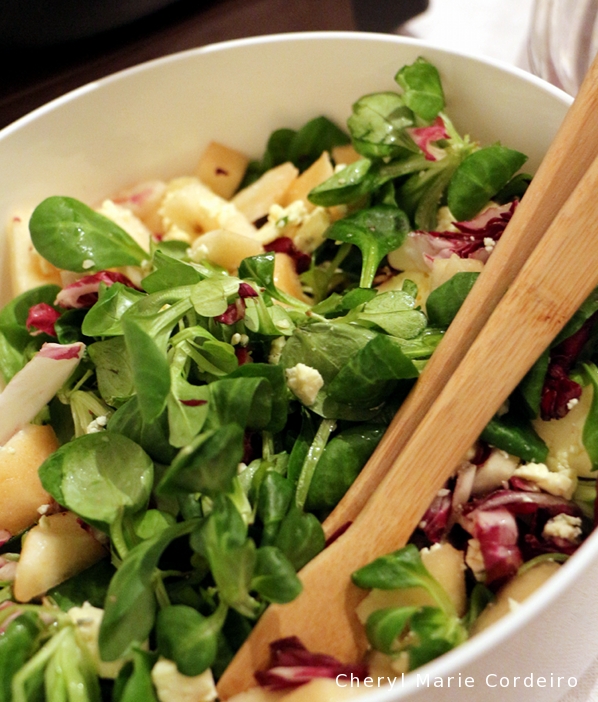
A traditional Swedish Christmas meal does not really offer much to those who are vegetarian, so this year we invented a salad – Rosen sallat ‘Palla Rosa 3’ with mâche or vintersallad and blue cheese. We added some slices of pear, some grapes and drizzled the whole thing over with oil and honey.

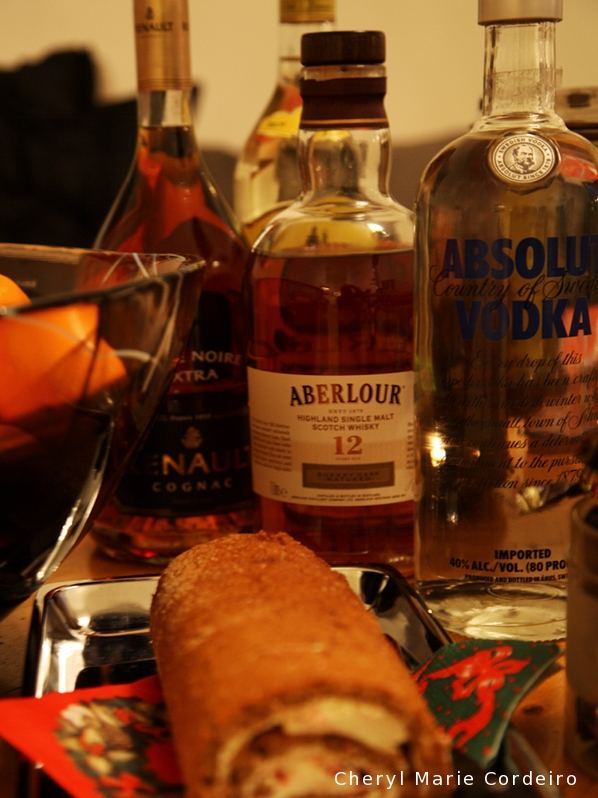
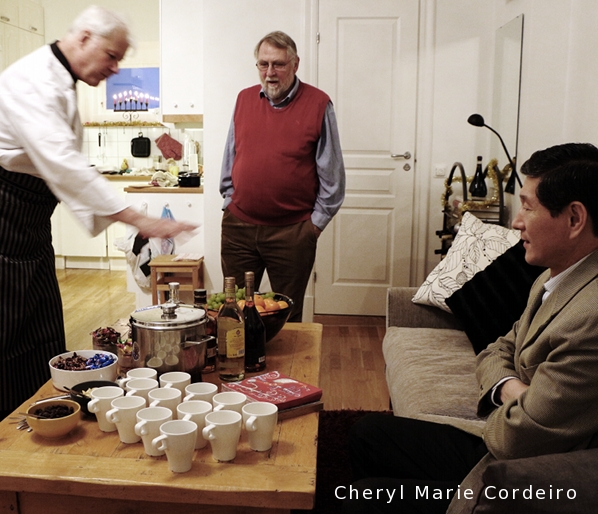
Then came the time for meeting up with friends, starting up with glögg – warm wine with sugar and spices, served with raisins and almonds.
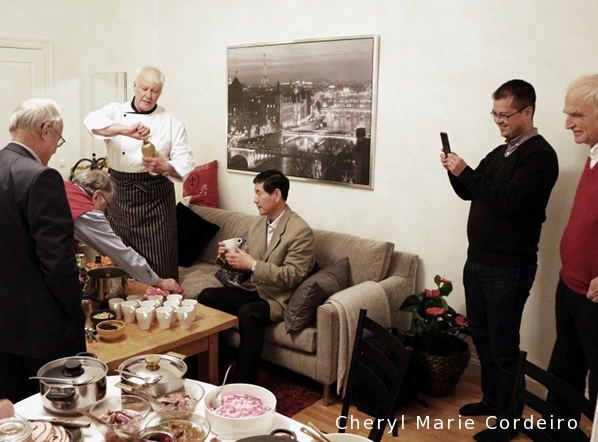

It seemed a little bit of this and that went down well with everyone.
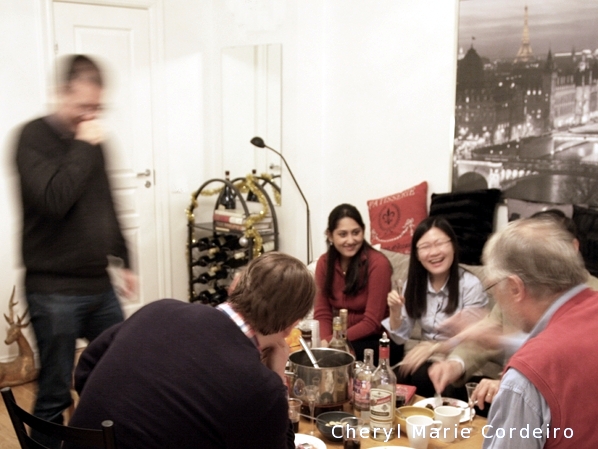
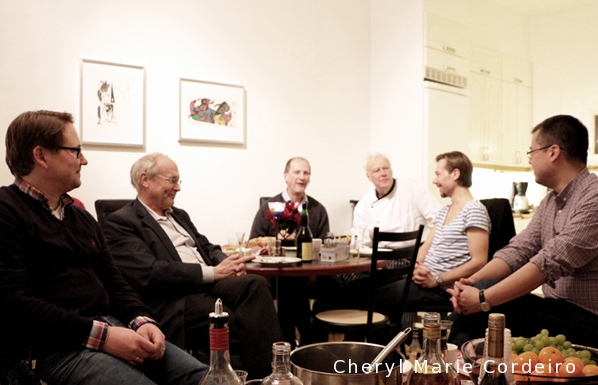
A friendly after work julmingel for the year end.
